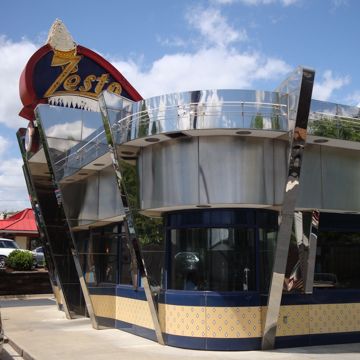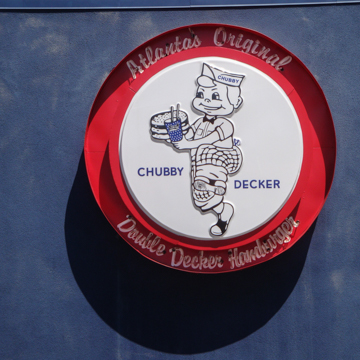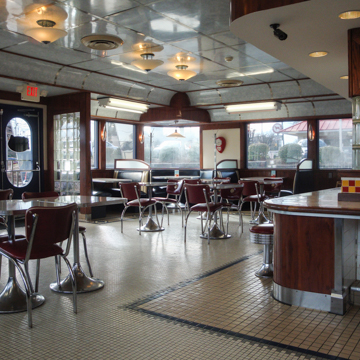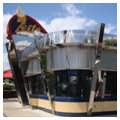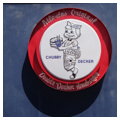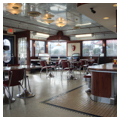Working with diner expert Richard Gutman, the architect and client of this retro drive-in restaurant produced a design that combines references to 1940s diners and to 1950s ice cream and hamburger stands. Zesto started in 1945 as a subsidiary of the Taylor Freezer Corporation, an Illinois manufacturer of soft serve ice cream machines called Zesto-O-Mats. Intended to compete with Dairy Queen, originally Zesto sold only ice cream, and by late 1949 there were Zestos operating in forty-six states. Today, six Zestos (primarily family-owned) continue to operate in the Atlanta area.
The first Atlanta Zesto was located across from Brookwood Station on Peachtree Street. John Livaditis opened it in 1949, when he was overseeing the expansion of Zestos throughout the southeast. By the middle of the 1950s, the Taylor Freezer Corporation withdrew from the business, leaving its franchises free to operate independently. By then Atlanta had Zestos on Piedmont Road (1953), here on Ponce de Leon Avenue (1954), and on Cheshire Bridge Road and on Roswell Road (both 1955); in 1958 another Zesto opened on Confederate Avenue. Each Zesto had, by this time, expanded their menus well beyond ice cream, adding foot-long hot dogs, fried chicken, french fries, and, in 1959, a double-decker hamburger eventually called the “Chubby Decker.” Today, the Piedmont Road location (#2469) is in existence as another restaurant, having been remodeled as Burrito Brothers in the 1990s. It has elaborate blue, white, and red checkerboard brickwork and a distinctive Mexican character along with a butterfly roof that recalls work of Marcel Breuer in the 1950s. This is a striking combination of features but the 1991 redesign of the Ponce de Leon Avenue location is the most architecturally distinctive.
The Ponce de Leon Zesto gleams with brilliant surfaces of stainless steel, strong colors of neon, and streamlined forms that successfully compete with the “golden arches” next door. The site plan is a classic U-shaped drive and parking arc around the building, offering a drop-off for dine-in customers at the street front and east side, and a drive-through on the west side with an exit back onto the avenue. Midcentury imagery abounds, including the flaring roof form, Moderne streamlining, a Deco-inspired entry door, and checkered tile insignia on the floor.
Consultant Richard Gutman, who had restored countless 1940s diners (including the 1946 Worcester Lunch Car Company diner now permanently installed at the Henry Ford Museum in Dearborn, Michigan), worked to insure that Zesto’s retro interior redesign maintained period authenticity. Continuous cove ceilings, booths, counter stools, lighting, wall surfaces, flooring, and condiments were all coordinated with a 1940s and 1950s historic look. Counter tiles adopted the primary red and yellow color of plastic cylindrical ketchup and mustard dispensers. A meal at Zesto became a nostalgic trip back to the 1950s, and those driving by often assume the roadside drive-in dates from forty years earlier than its 1991 date. A new chain restaurant has occupied the building since 2014.














